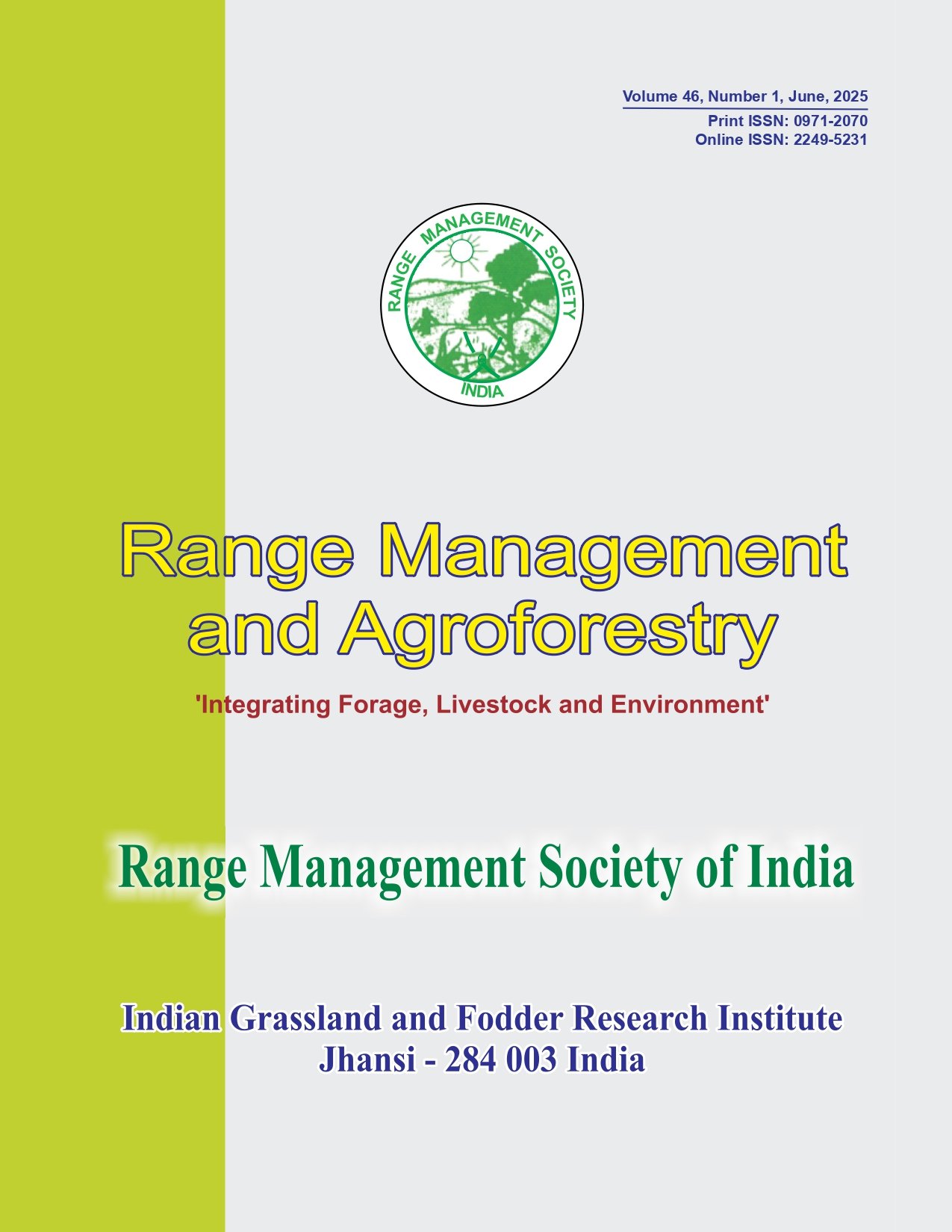Tree canopy-herbaceous layer relation in temperate woodland: seasonal variations in forage quantity and quality
Keywords:
Forage availability, Forage quality, Grassland, Herbaceous biomass, Herbivores, RangelandAbstract
Tree cover affects herbaceous composition and productivity and can improve forage quality and quantity. We evaluated if tree cover in woodlands co-dominated by deciduous and evergreen have any positive effect on forage availability for domestic and wild herbivores. Species cover, grass and forbs biomass were estimated in five canopy types: (1) no tree cover, (2) full cover of deciduous trees, (3) partial cover of deciduous trees, (4) full cover of evergreen trees and (5) partial cover of evergreen trees. Differences between canopy types in green and total biomass depended on sampling date. In the moderately grazed range, the biomass of green grasses under the partial cover of deciduous trees was higher and lower than in no tree cover areas in winter and summer respectively. In the heavily grazed range, this biomass for both canopy types was similar in all the seasons. Similar C3 grass cover was found in winter and spring in no tree cover and under the partial cover of deciduous trees. However, C4 cover was greater in no tree cover which is likely to be related with the greater standing dead biomass compared with any canopy type. Moreover, temporal variation of green biomass suggests that phenology differs between grasses under different canopy type. Since green biomass was found to be enhanced by different canopy types in different seasons, herbivores might benefit by the combination of canopy types at a landscape scale.




